Measuring for curtains is a simple task, but only if you know how. Our step by step guide will show you how to get all the appropriate measurements correctly. We have also included tips, advice and things to consider when you measure for curtains. E.g. the amount of ‘gather’ you want.
How to Measure for curtains:
Tips:
- You should select and fit your track or pole (or curtain wire for nets), before taking any measurements for the length of your curtains. (You may not always be able to fit your track or pole, the exact height you would like. e.g. when trying to drill into a concrete lintel).
- When you measure for curtains, always use a steel tape to take your measurements. (fabric or plastic type tape-measures tend to stretch over time and may give a false reading).
- Every measurement you take, WRITE IT DOWN. 😉
Step 1: Measure for a New Curtain Pole or Track
(Please skip this step if there is an existing pole or track you intend to use.)
First we need to measure the inside width of the window recess. (Measure A)
Next, decide how far your curtains will over-hang the wall, each side of the window. This would normally be around 20cm (8 inches) each side and enables the curtains to open wider, allowing more daylight to enter the room. (Measure B)

Now add A + B + B. This will give us the length of the track or pole needed (C), excluding finals.

Step 2: Measure for Curtains Width
(If you skipped step 1, measure your track/pole (excluding finals), this will give you measurement (C).)

When you measure for curtains width, it is important to consider the ‘gather’.
To have curtains with a medium gather when closed, we take our track/pole measurement (C), multiply it by 1.5 then divide by 2. The result is the required width of Each curtain.
For curtains with full/normal gather when closed, measurement C would be the required width of Each curtain.
If you desire a heavy gather, multiply measurement C by 2.5 then divide by 2. Again, the result is the required width of Each curtain.
Ok, we’ve now established the width of our curtains. Here’s how we work out the length.
Step 3: Measure for Curtains Drop / Length
Before we can measure for curtains length, we need to decide whether our curtains will fall to the sill, below the sill or to the floor.
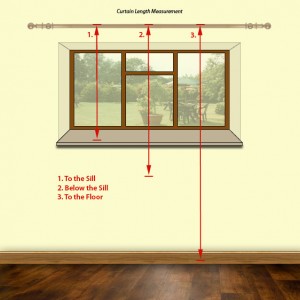
– Sill length curtains usually finish 1/2 inch (1.25cm) above the sill.
– Curtains that fall below the sill usually finish 15cm (6 inches) below. This, of course, can be adjusted for personal preference.
– For floor length curtains you should allow 1 inch (2.5cm) clearance to avoid dragging.
(Click Image to Enlarge)
Now, with your track/pole fitted 6-8 inches (15-20cm) above the window recess, measure from the top edge of the track/pole to your chosen finished length.
- For Tab-top and all types of pleated curtains, write down your measurement.
- For Eyelet/Ring top curtains, write down your measurement and add 1.5 inches (3.5cm) (This is the distance from the inner edge of the eyelet to the top edge of the curtain).
Step 4: Important!
Sit down and relax with your favourite beverage!
Well… maybe you could put away your step ladder and tape first… I’ll leave that up to you.
Measuring for Ready Made Curtains
When you measure for curtains, and intend to buy ready made curtains, there are a few things to consider.
- Ready made curtains are only available in certain sizes.
- You may need to get them shortened which will add to the over-all cost.
- The sizes quoted on the packaging are approximate measurements, NOT exact.
- The quality of the fabric can often be rather poor. Especially when buying at greatly reduced prices.
Here is a list of the more common sizes available. The first number given is always the width. So curtains that are 117x137cm would have a width of 117cm, and a length of 137cm. Please remember when buying ready made curtains, the sizes given are approximate.
Standard Ready Made Curtain Sizes: read more
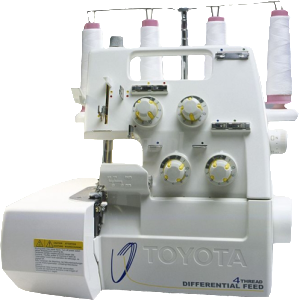

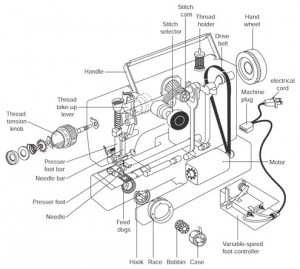
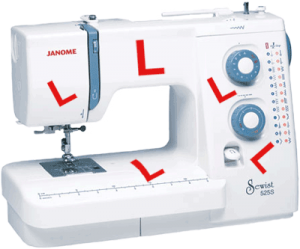
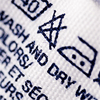 Washing symbols, or Laundry symbols as they are also known, are pictograms found on tags attached to almost every item made of fabric. Clothing, curtains, cushion covers and bedding all have these labels. Even leather items like jackets and trousers carry these laundry symbols. Possible exceptions would be things like bags or shoes. These washing symbols are there to show you the best way to handle the laundry process for that particular item.
Washing symbols, or Laundry symbols as they are also known, are pictograms found on tags attached to almost every item made of fabric. Clothing, curtains, cushion covers and bedding all have these labels. Even leather items like jackets and trousers carry these laundry symbols. Possible exceptions would be things like bags or shoes. These washing symbols are there to show you the best way to handle the laundry process for that particular item.

